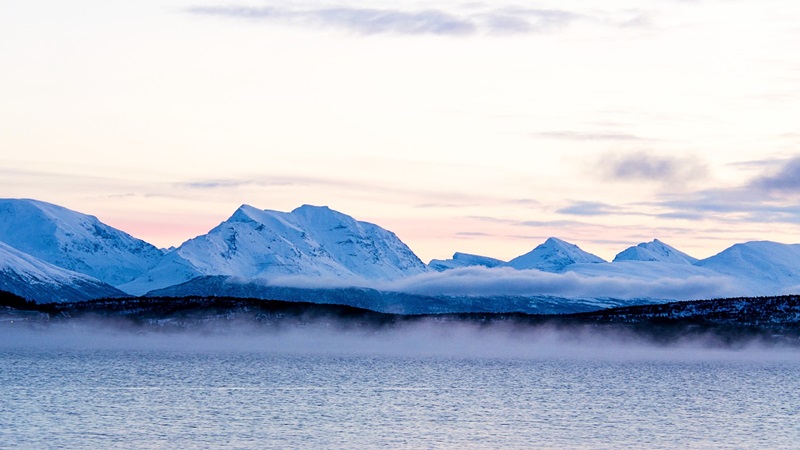
Gemma Saravia
Why could England have the climate of Northern Norway and what AMOC has to do with it?
Most Read Stories Today
-
Water Scarcity and Artificial Rainfall: The Positive and The Negative Effects of Cloud Seeding, including Health Hazards and Climate Implications.
-
Renewable Energy in Rural Areas: Challenges, Opportunities, and Successful Rural Projects
-
Pakistan's Agriculture at Risk Due to Climate Variability
-
South Africa's Recent Floods: Is Climate Change to Blame?
-
South Korea's floods: root causes and prevention strategies.
-
South Africa: Cape Town, A City Under Fire
-
The Human Cost of Climate Disasters
-
Our Oceans, Our Future: The South African Dilemma of Overfishing
-
Degenerative Impact of Hydrocarbons On The Environment.
-
Sustainable Urban Planning - Copenhagen and the Path to Climate Resilience
The announcement of a possible collapse of the North Atlantic circulation (AMOC), a year and a half ago, generated many alarming headlines in the press evoking a possible glaciation in Northern Europe, starting this decade.
The origin was the publication of a scientific study in the journal Nature Communications, in July 2023. The authors, two brothers and professors of Physics and Mathematics at the University of Copenhagen, warned that, according to their calculations, the collapse would occur around the middle of this century if greenhouse gas emissions were not reduced. They also warned of the serious impacts on the climate in the North Atlantic region. They claim that, if this happens, England or Ireland would end up having the climate of northern Norway.
Recently, Peter Ditlevsen, one of the authors, participated in a conference on non-linear oceanic and atmospheric flows at the Institute of Marine Sciences of the CSIC, Barcelona, co-organized with the Mathematical Research Center of the UAB. Some scientists expressed an opinion contrary to his conclusions, but Ditlevsen maintains that “the Atlantic circulation (AMOC) could be collapsing, and that it could happen only 30 years from now”.
As a result of this shutdown, the Danish physicist warns that we will see a cooling of perhaps must degrees in winter and five in summer, and that this would have serious consequences for food production and agriculture in northern Europe. “There are already scientific studies that warn that 50% of crop production could disappear if this happens.”
The AMOC is a tipping point in the climate system. It controls the transport of energy and salinity in the Atlantic Ocean and is responsible for Europe's mild climate compared to other areas with similar latitudes.
Pablo Ortega, Climate Variability and Change co-leader at the Barcelona Supercomputing Center, explains that “this very warm temperature we have in Barcelona, compared to other cities in the United States, such as New York, where it is bitterly cold in winter, is due to the transport of heat that influences the air masses coming from the west”.
A slowing of the AMOC circulation has been reported in recent years, but the IPCC, the scientific body of reference on climate change, suggests that an abrupt halt this century is highly unlikely. The IPCC, which represents a balance of scientific views, concludes that a total collapse would take several decades or more than a century to materialize.
Along the same lines, Pablo Ortega, Climate Variability and Change co-leader at the Barcelona Supercomputing Center, states: “The projections we have indicate that there will be a weakening between now and the end of the century. If we believe the models, this weakening will be 35% and 45%, in terms of intensity, and this alone would have a major impact on the climate.
But a collapse is not expected”. On the other hand, he also qualifies that the current models are made with not very fine resolutions “and we know that there are processes that are not being represented; processes that can further destabilize the North Atlantic circulation”.
Asked whether the IPCC may have been wrong in its projections, Ditlevsen argues that the problem is that climate models are conservative and underestimate the speed of the changes that are occurring.
“If you look at sea ice loss in the Arctic, all the models indicate a slow decline in sea ice. But if you look at observations, the loss is much faster than the models predict.”
Despite the lack of scientific consensus, the need for further research and monitoring of the North Atlantic circulation has been highlighted. And a small weakening can have an impact.
When asked what he thinks needs to be done to keep the AMOC from collapsing, Ditlevsen says we need to apply the same medicine as we do to combat global warming: reduce greenhouse gas emissions.
“If I said you have to do completely different things, such as drill, baby, drill (a reference to President Trump's “drill without a drill rig” during his inauguration), I would be much more reluctant to give advice without a high degree of certainty. But it's the one that's needed: a green transition and complying with the Paris Agreement.”
He himself does not consider himself a climate alarmist. He jokes and says that perhaps someone else would have been very nervous to see the results of his scientific study. He believes that we have to remain optimistic, as a global society, and that only then can we prevent things like the collapse of the AMOC from happening. “Fear gets us nowhere. If we think what the hell, I can't do anything about it.... It's like being on the Titanic, and saying, 'Come on, let's go to the bar.' And this is exactly what you don't have to do.”

Terms & Conditions
Subscribe
Report
My comments